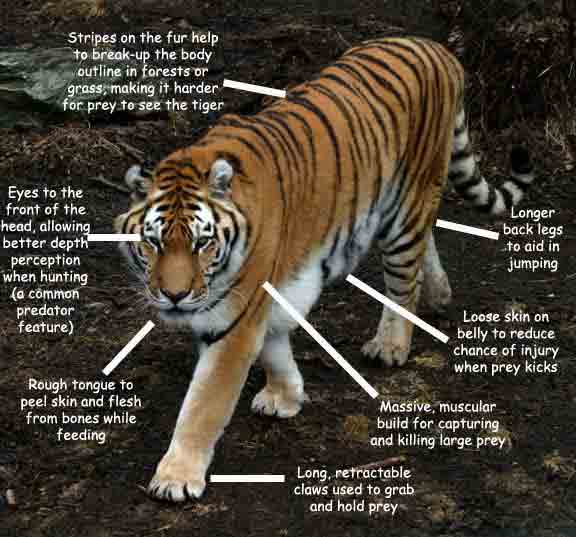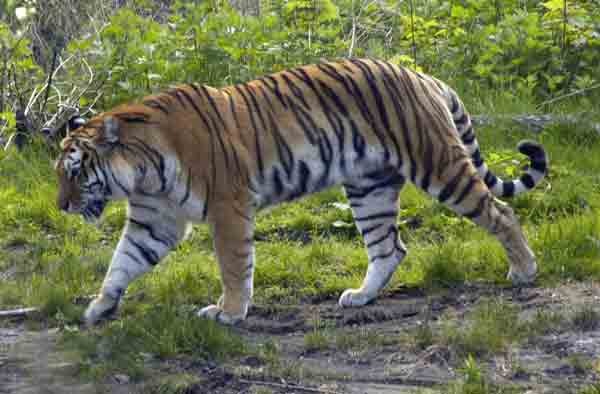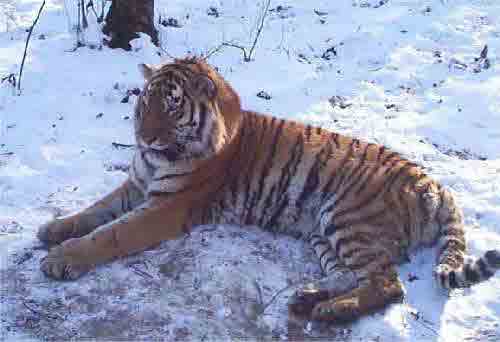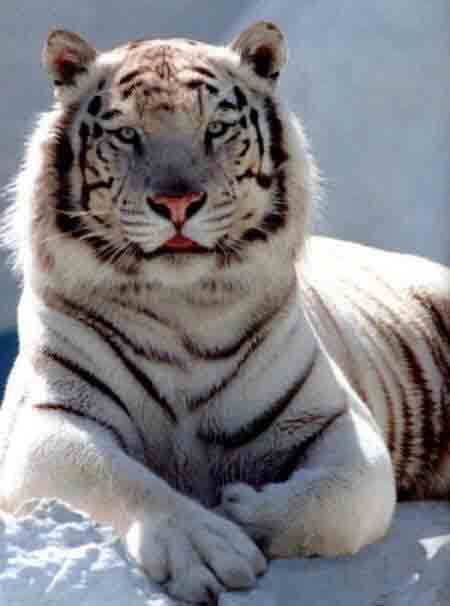Background
No one knows exactly why tigers are striped, but scientists think that the stripes act as camouflage, and help tigers hide from their prey while they hunt. Tiger stripes are like human fingerprints; no two tigers have the same pattern of stripes. Most tigers have an orange coat with dark brown or black stripes accented with white. Tigers that live in cold climates (Siberian tigers) have thicker fur than tigers that live in warm climates. A tiger's tail is 3 to 4 feet long, about half as long as its body. Tigers use their tails for balance when they run through fast turns. They also use their tails to communicate with other tigers. A tiger's paw prints are called pug marks .
Siberian or Amur Tiger (Panthera tigris altaica) is the largest tiger with the lightest coloured coat. Its winter coat is shaggy, dense, paler than its summer coat. This is how it survives temperatures as low as -33 degrees C. Its stripes are brown rather than black. Its muzzle is broader and males have a very well developed ruff around their necks, almost like a mane.






